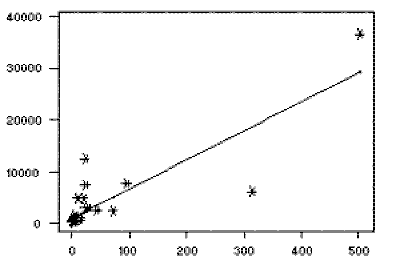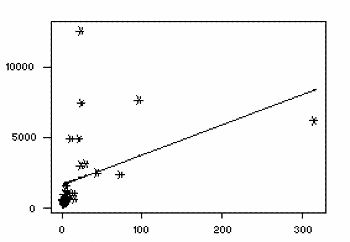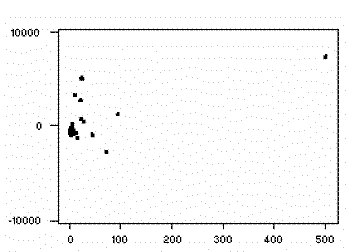Bruce Kovner, one of the original Commodities Corp superstars, is hanging up his jersey after 28 years of trading. Via
Bloomberg:
Bruce Kovner, the billionaire co- founder of Caxton Associates
LP, is retiring from the $10 billion hedge fund, ending a three-decade
run during which he traded everything from soybeans to Japanese yen
futures and returned twice as much as the Standard & Poor’s 500
Index.
“After 34 years in the trading business and more than 28 years
leading Caxton, the time has come to hand the leadership of the company
to a new generation,” Kovner, 66, wrote…
Kovner’s main Caxton Global Investment fund has returned an
average of 21 per cent a year since inception, compared with an average
gain of 11 per cent including dividends by the Standard & Poor’s 500
Index. The $7 billion fund had one losing year, in 1994, when it fell
2.5 per cent. Since 1983, the S&P has fallen in five calendar years,
including a 37 per cent decline in 2008. The top returns have helped
Kovner amass a fortune estimated at $4.5 billion, according to Forbes
magazine.
Kovner was also one of the best interviews in the original
Market Wizards series.
Some selected excerpts below jump:
On protecting emotional equilibrium:
To this day, when something happens to disturb my emotional
equilibrium and my sense of what the world is like, I close out all
positions related to that event.
On the first rule of trading:
The first rule of trading — there are probably many first rules — is
don’t get caught in a situation in which you can lose a great deal of
money for reasons you don’t understand.
On making a million:
Michael [Marcus] taught me one thing that was incredibly important… He taught me that you
could
make a million dollars. He showed me that if you applied yourself,
great things could happen. It is very easy to miss the point that you
really can do it. He showed me that if you take a position and use
discipline, you can actually make it.”
On allowing for mistakes:
He also taught me one other thing that is absolutely critical: You
have to be willing to make mistakes regularly; there is nothing wrong
with it. Michael taught me about making your best judgment, being wrong,
making your next best judgment, being wrong, making your third best
judgment, and then doubling your money.
On elements of a successful trading:
I’m not sure one can really define why some traders make it, while
others do not. For myself, I can think of two important elements. First,
I have the ability to imagine configurations of the world different
from today and really believe it can happen. I can imagine that soybean
prices can double or that the dollar can fall to 100 yen. Second, I stay
rational and disciplined under pressure.
[Successful traders are] strong, independent, and contrary in the
extreme. They are able to take positions others are unwilling to take.
They are disciplined enough to take the right size positions. A greedy
trader always blows out.
On having a market view:
I almost always trade on a market view; I don’t trade simply on
technical information. I use technical analysis a great deal and it is
terrific, but I can’t hold a position unless I understand why the market
should move.
…there are well-informed traders who know much more than I do. I
simply put things together… The market usually leads because there are
people who know more than you do.
On technical analysis:
Technical analysis, I think, has a great deal that is right and a
great deal that is mumbo jumbo… There is a great deal of hype attached
to technical analysis by some technicians who claim that it predicts the
future. Technical analysis tracks the past; it does not predict the
future. You have to use your own intelligence to draw conclusions about
what the past activity of some traders may say about the future activity
of other traders.
…For me, technical analysis is like a thermometer. Fundamentalists
who say they are not going to pay any attention to the charts are like a
doctor who says he’s not going to take a patient’s temperature. But, of
course, that would be sheer folly. If you are a responsible participant
in the market, you always want to know where the market is — whether it
is hot and excitable, or cold and stagnant. You want to know everything
you can about the market to give you an edge.
…Technical analysis reflects the voice of the entire marketplace and,
therefore, does pick up unusual behaviour. By definition, anything that
creates a new chart pattern is something unusual. It is very important
for me to study the details of price action to see if I can observe
something about how everybody is voting. Studying the charts is
absolutely critical and alerts me to existing disequilibria and
potential changes.
On trading ranges and price patterns:
…as a trader who has seen a great deal and been in a lot of markets,
there is nothing disconcerting to me about a price move out of a trading
range that nobody understands.
…Tight congestions in which a breakout occurs for reasons that nobody understands are usually good risk/reward trades.
…The more a price pattern is observed by speculators, the more prone
you are to have false signals. The more a market is the product of
nonspeculative activity, the greater the significance of technical
breakouts.
…The general rule is: the less observed, the better the trade.
On predetermined risk points:
Whenever I enter a position, I have a predetermined stop. That is the
only way I can sleep. I know where I’m getting out before I get in. The
position size on a trade is determined by the stop, and the stop is
determined on a technical basis… I always put my stop behind some
technical barrier.”
I never think about [stop vulnerability], because the point about a
technical barrier — and I’ve studied the technical aspects of the market
for a long time — is that the market shouldn’t go there if you are
right.
On the emotional burden of trading:
The emotional burden of trading is substantial; on any given day, I
could lose millions of dollars. If you personalise these losses, you
can’t trade.
On imagining alternative scenarios:
One of the jobs of a good trader is to imagine alternative scenarios.
I try to form many different mental pictures of what the world should
be like and wait for one of them to be confirmed. You keep trying them
on one at at a time. Inevitably, most of these pictures will turn out to
be wrong — that is, only a few elements of the picture may prove
correct. But then, all of a sudden, you will find that in one picture,
nine out of 10 elements click. That scenario then becomes your image of
the world reality.
On seeking vulnerable consensus:
What I am really looking for is a consensus the market is not
confirming. I like to know that there are a lot of people who are going
to be wrong.
On stocks vs commodities:
The stock market has far more short-term countertrends. After the
market has gone up, it always wants to come down. The commodity markets
are driven by supply and demand for physical goods; if there is a true
shortage, prices will tend to keep trending higher.
On trading too big:
My experience with novice traders is that they trade three to five
times too big. They are taking 5 to 10 per cent risks on a trade when
they should be taking 1 to 2 per cent risks.
On the dangers of correlation:
Through bitter experience, I have learned that a mistake in position
correlation is the root of some of the most serious problems in trading.
If you have eight highly correlated positions, then you are really
trading one position that is eight times as large.





























 To view the fit of the model to the observed data, one may plot the computed regression line over
the actual data points to evaluate the results. For this example, the plot appears to the right,
with number of individuals per television set (the explanatory variable) on the x-axis and number
of individuals per physician (the dependent variable) on the y-axis. While most of the data points
are clustered towards the lower left corner of the plot (indicating relatively few individuals
per television set and per physician), there are a few points which lie far away from the main
cluster of the data. These points are known as outliers, and depending on their
location may have a major impact on the regression line (see below).
To view the fit of the model to the observed data, one may plot the computed regression line over
the actual data points to evaluate the results. For this example, the plot appears to the right,
with number of individuals per television set (the explanatory variable) on the x-axis and number
of individuals per physician (the dependent variable) on the y-axis. While most of the data points
are clustered towards the lower left corner of the plot (indicating relatively few individuals
per television set and per physician), there are a few points which lie far away from the main
cluster of the data. These points are known as outliers, and depending on their
location may have a major impact on the regression line (see below).
 With this influential observation removed, the regression equation is
now
With this influential observation removed, the regression equation is
now  Once a regression model has been fit to a group
of data, examination of the residuals (the deviations from the fitted line to the observed values)
allows the modeler to investigate the validity of his or her assumption that a linear relationship
exists. Plotting the residuals on the y-axis against the explanatory variable on the x-axis
reveals any possible non-linear relationship among the variables, or might alert the modeler to
investigate lurking variables. In our example, the residual plot amplifies the
presence of outliers.
Once a regression model has been fit to a group
of data, examination of the residuals (the deviations from the fitted line to the observed values)
allows the modeler to investigate the validity of his or her assumption that a linear relationship
exists. Plotting the residuals on the y-axis against the explanatory variable on the x-axis
reveals any possible non-linear relationship among the variables, or might alert the modeler to
investigate lurking variables. In our example, the residual plot amplifies the
presence of outliers. 














 Professional traders already have the knowledge and experience to know which trading techniques and trading systems could be profitable and which trading techniques and trading systems should be avoided, but professional traders are not looking for a new trading technique or trading system (because they are already trading correctly). New traders do not have the knowledge and experience to know which trading techniques and trading systems could be profitable and which trading techniques and trading systems should be avoided, and new traders are exactly the traders who are looking for a new trading technique or trading system (and even worse new traders are often still looking for the holy grail of trading).
Professional traders already have the knowledge and experience to know which trading techniques and trading systems could be profitable and which trading techniques and trading systems should be avoided, but professional traders are not looking for a new trading technique or trading system (because they are already trading correctly). New traders do not have the knowledge and experience to know which trading techniques and trading systems could be profitable and which trading techniques and trading systems should be avoided, and new traders are exactly the traders who are looking for a new trading technique or trading system (and even worse new traders are often still looking for the holy grail of trading).
